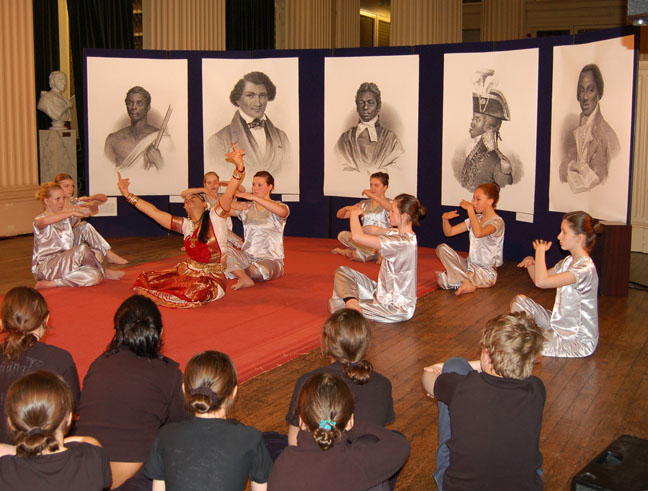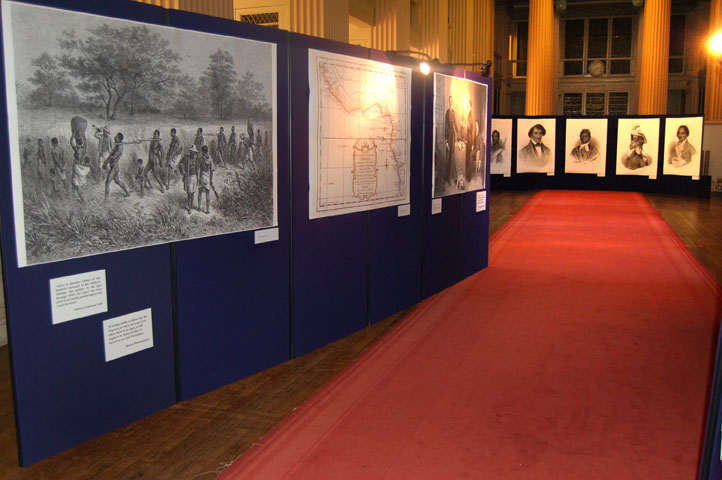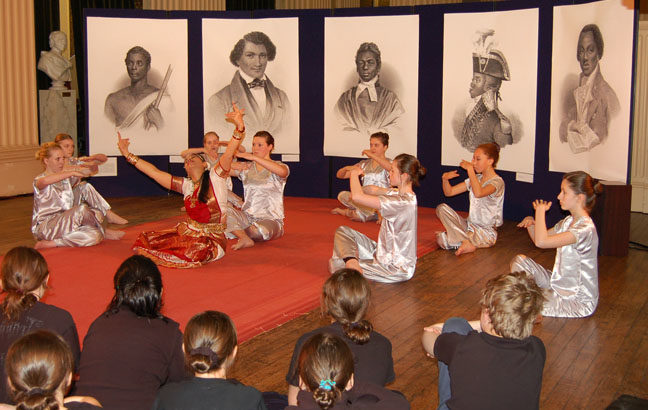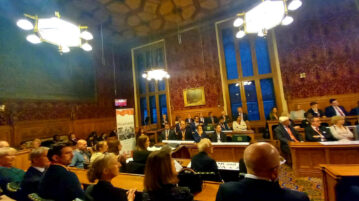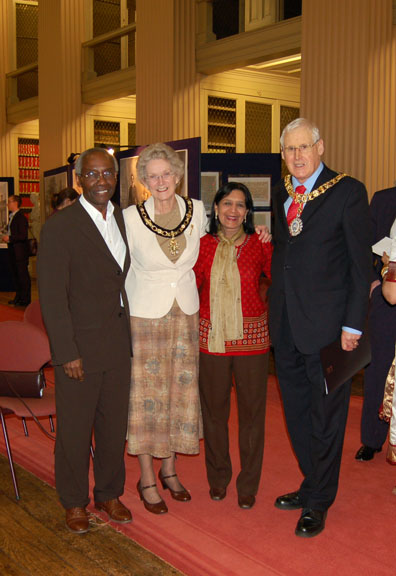
‘Witness’ was produced in 2007 with funding from the Heritage Lottery Fund to commemorate the bicentenary of the Abolition of the Slave Trade by the United Kingdom. It tells the stories of several relatively unknown men and women, who played a major role in the Abolition movement thus shedding a new light on this period of history.
All the historical engravings, original maps and documents featured in the exhibition have been gathered by Heartstone over several years with the help of collectors from all over the world. A special feature of this exhibition is the presentation of engravings most of which started life as faded A4 or smaller originals restored and enlarged to high quality large format. This is a technique perfected by Heartstone and acknowledged as still being unique to the organisation. This allows a life size ‘environment’ to be created into which audiences can walk giving a closer connection with the reality of the time.
In the spaces, audiences meet storytellers, dancers and historians further bringing the story ‘to life’. As well as the general public, the first presentation of the exhibition in Edinburgh was visited by schoolchildren from across the City who then subsequently undertook projects over the next two terms using a CD version of the exhibition to raise discussion, debate, and produce their own small scale exhibitions to reach out to their local communities.
